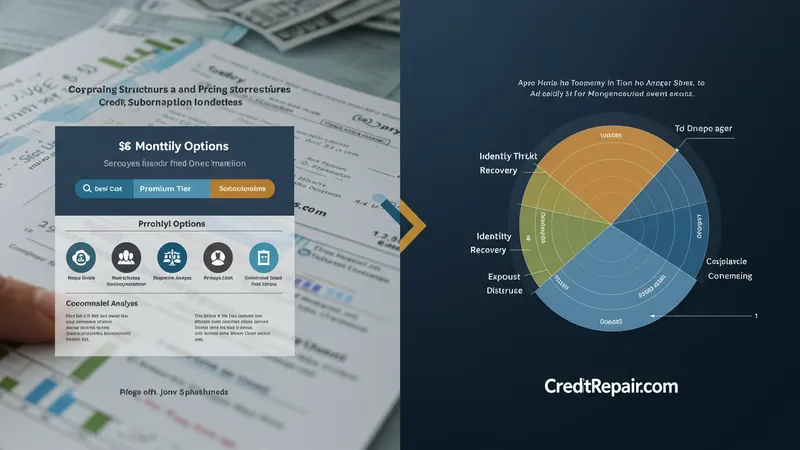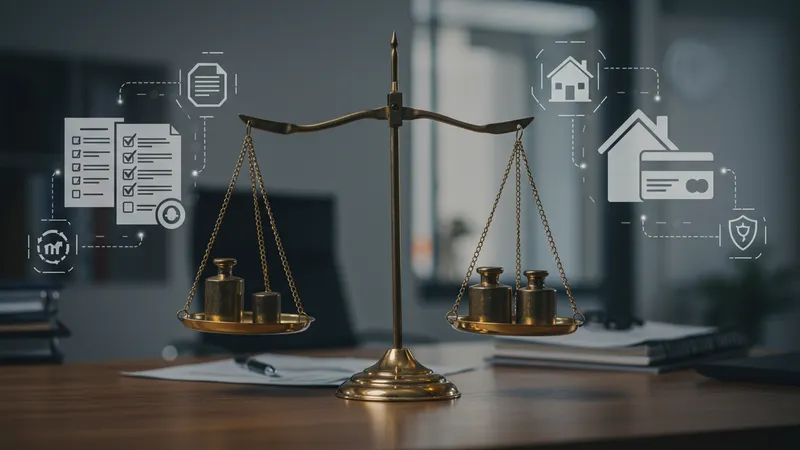

Understanding the mechanisms behind credit repair services and their interaction with your credit report often reveals overlooked strategies and benchmarks in the United States. At its core, credit repair means a process where agencies work with data from your credit file, aiming to identify inaccuracies or questionable entries. They may challenge those entries with the credit bureaus on your behalf, using formal dispute channels designed to ensure credit information remains, by law, as accurate and fair as possible. These services do not develop ways to erase valid debt or alter history, but they focus on documentation, consumer rights, and procedural corrections within the established U.S. credit system.
When a consumer engages a reputable credit repair company, the process begins with an in-depth review of their credit report. This audit identifies negative marks such as late payments, collections, or errors. The agency prepares and submits disputes to credit bureaus—Equifax, Experian, and TransUnion—challenging items that appear unverifiable or inaccurate. The credit reporting agencies must then investigate and respond, typically within 30 days, either removing or correcting the disputed items if they cannot be substantiated by the creditor.

A notable distinction among U.S.-based credit repair firms lies in their combination of technology tools and human expertise. Lexington Law, for instance, employs legal-based strategies, while CreditRepair.com leverages digital dashboards and routine progress updates. Sky Blue Credit stands out for its simple pricing and cancellation policies, geared to make the process less intimidating for first-time users.
The impact of these services can vary. According to the Federal Trade Commission, while consumers can dispute credit errors on their own, credit repair companies often bring procedural knowledge and organizational rigor—helpful for navigating disputes, especially in more complex cases where multiple inaccuracies require ongoing tracking and follow-up.
Despite their name, credit repair services cannot instantly transform a credit score. Their role is to help remove or correct inaccurate items, resulting in gradual improvements over several billing cycles. Many Americans find the process worthwhile when working through the aftermath of identity theft or administrative mistakes within creditor reporting.
For those considering such services, the biggest value often comes from company transparency and compliance with U.S. consumer protection laws, such as the Credit Repair Organizations Act (CROA). These regulations ensure that agencies do not overpromise results or charge before delivering verifiable progress.
In summary, working with a credit repair firm means harnessing specialized dispute support, familiar with federal and state rules, to potentially clear erroneous records or bring clarity to persistent credit inaccuracies. The deeper details reveal even more valuable insights ahead, particularly when comparing how these services differ in methods, transparency, and tangible results.
U.S.-based credit repair companies like Lexington Law, CreditRepair.com, and Sky Blue Credit center their processes around distinct steps designed to address discrepancies on credit reports. The starting point is typically a comprehensive analysis of the client's credit file, which forms the foundation for identifying errors, outdated records, or misreported transactions. Each service then builds a tailored action plan, prioritizing disputes according to potential score impact and documentation strength.

One critical feature within the U.S. system is the use of consumer rights under the Fair Credit Reporting Act (FCRA). This federal law gives individuals the authority to challenge information that cannot be verified. Credit repair agencies leverage these protections by drafting formal dispute letters and tracking responses from the three major credit bureaus, leading to more systematic and organized credit improvement campaigns.
A striking point of differentiation is how these companies report progress to clients. For example, CreditRepair.com uses app-based tracking and sends real-time alerts when items are removed or updated. In contrast, Sky Blue Credit emphasizes direct communication channels and easy-to-understand monthly statements. This transparency is crucial for client trust and informed financial decision making.
U.S. consumers considering such services should also weigh the importance of compliance. Under the Credit Repair Organizations Act, firms are prohibited from charging upfront fees, mandating written contracts, and offering the right to cancel within a specified window. Familiarity with these safeguards protects individuals from noncompliant providers, ensuring a legitimate and transparent process.
Pricing structures among leading credit repair services in the U.S. display both similarities and unique approaches. Lexington Law bills clients on a monthly basis, with premium tiers offering more hands-on legal analysis and customized documentation. Their base plan fits many needs, but add-ons are available for those with more extensive records to address.

CreditRepair.com offers straightforward pricing, grouping service tiers by complexity. This allows clients to select options that match their specific circumstances, such as ongoing identity theft recovery or multiple negative tradelines. Each tier dictates the number of disputes per cycle and the frequency of updates, so clients retain control over their investment and expectations.
Sky Blue Credit distinguishes itself by maintaining a single flat rate, which appeals particularly to U.S. consumers wary of hidden fees or complicated contracts. The service is designed to be pauseable and restartable, providing flexibility for irregular financial circumstances. This feature reduces anxiety about long-term commitments and billing cycles.
Across services, pricing transparency is tightly regulated in the U.S. All firms are required to publish clear fee schedules and refund policies, thanks to government oversight. Clients should be wary of institutions that depart from this standard, as regulatory adherence is a hallmark of reputable providers within the industry.
The effectiveness of credit repair services often hinges on the type and volume of negative items present in a user's report. For example, a client with several medical collection accounts may benefit from specialized dispute strategies offered by Lexington Law, which possesses legal resources for detailed documentation and escalation to credit bureaus.

Many users turn to CreditRepair.com for regular feedback and easily digestible progress charts. U.S. consumers recovering from short-term hardships—like emergency hospitalizations or job layoffs—have reported more rapid score gains when inaccuracies or outdated negative marks are properly challenged and removed.
Sky Blue Credit attracts clients seeking a simple and organized process, often for those who are new to managing credit or whose primary need is to clean up a handful of small errors across multiple bureaus. Their hands-on, personalized approach appeals to individuals who prefer less complexity in their financial services.
National statistics show that while no agency can predetermine the exact credit score outcome, a significant percentage of U.S. consumers see at least one negative item successfully removed within the first few months of persistent, documented disputes. This demonstrates the tangible, incremental value these firms offer in restoring fair and accurate credit histories.
Over the long term, the primary benefit of engaging with a reputable credit repair service is the potential restoration of creditworthiness, paving the way for more favorable loan terms, lower insurance premiums, and easier approvals for rental housing in the United States. However, ongoing financial discipline—such as timely bill payment and responsible credit usage—remains essential for maintaining improvements initiated by professional dispute processes.

It is important to acknowledge the inherent limitations of these services. No firm can remove legitimate debts or guarantee a specific credit score change. Instead, their value lies in ensuring compliance with reporting laws and correcting errors that would otherwise remain unchallenged, unfairly impacting one’s financial reputation.
Looking ahead, regulatory developments may further influence how credit repair operates in the U.S. market. For instance, advancements in digital accessibility and stricter enforcement of reporting standards are expected, making consumer education and vigilance more important than ever. Reliable services help clients stay informed about these changes and adapt accordingly.
In summary, understanding how credit repair services function alongside your credit report reveals both the promise and constraints of this industry for American consumers. When aligned with realistic goals, legal protections, and proactive financial habits, these services can significantly support the journey toward stronger credit and broader financial opportunities.